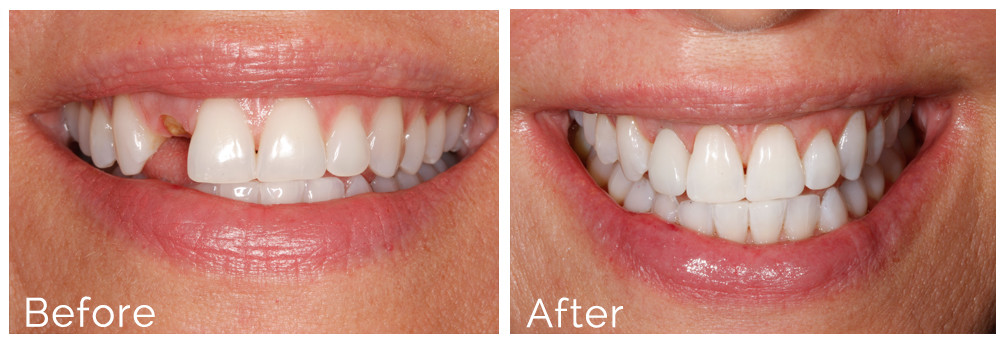Getting The Dental Sense To Work
Getting The Dental Sense To Work
Blog Article
Some Ideas on Dental Sense You Should Know
Table of ContentsExcitement About Dental SenseA Biased View of Dental SenseThe Definitive Guide to Dental Sense9 Easy Facts About Dental Sense Explained
are medical devices surgically implanted right into the jaw to bring back an individual's ability to chew or their appearance. They provide support for synthetic (fake) teeth, such as crowns, bridges, or dentures. When a tooth is shed as a result of injury or illness, an individual can experience difficulties such as quick bone loss, defective speech, or changes to eating patterns that lead to discomfort.Dental dental implant systems include an oral implant body and dental implant joint and may also include an abutment fixation screw. Dental implants. The dental implant body is operatively placed in the jawbone in location of the tooth's origin. The oral implant abutment is usually affixed to the implant body by the joint fixation screw and expands through periodontals right into the mouth to sustain the affixed fabricated teeth
(https://myanimelist.net/profile/dentalsense1)Structure of The Dental Implant System selecting oral implants, talk with your oral company regarding the prospective benefits and risks, and whether you are a prospect for the treatment. Things to consider: Your total wellness is a vital consider determining whether you are an excellent candidate for dental implants, how much time it will certainly require to heal, and for how long the implant might remain in location.
Cigarette smoking might influence the recovery process and lower the long-lasting success of the implant. The healing process for the implant body may take numerous months or longer, during which time you typically have a short-lived joint instead of the tooth. the oral implant procedure: Thoroughly comply with the oral health instructions provided to you by your oral copyright.
Dental Sense Fundamentals Explained
Implant failure can lead to the demand for one more surgery to fix or replace the implant system. Recovers the capability to eat Recovers aesthetic appearance Assists keep the jawbone from diminishing as a result of bone loss Preserves the health and wellness of the bordering bone and gums Helps keep adjacent (close-by) teeth steady Enhances lifestyle Damages to surrounding all-natural teeth throughout implant positioning Injury to the surrounding cells during surgical treatment, such as sinus opening Injury during surgery (for instance, fracture of bordering jawbone) Insufficient function, such as really feeling like the teeth do not attack together usually A feeling that the tooth is loosened or turning in place arising from a joint screw loosening up Implant body failure (looseness of the implant body) due to systemic infection, which might be more probable in people with uncontrolled diabetes mellitus because of neighborhood infection in bone and gum tissues supporting the implant body due to postponed healing, which might be most likely in patients who smoke Difficulty cleansing the gum tissues around the dental implant, resulting in bad oral hygiene Untreated periodontal disease Post-surgical numbness because of nerve impingement or damage Always alert health and wellness care carriers and imaging technicians that you have dental implants prior to any kind of magnetic resonance imaging (MRI) or x-ray procedures.
FDA is not familiar with any adverse events reported for MRI or x-ray treatments with dental implants. Oral implants systems are commonly constructed from materials that follow global consensus criteria of the International Organization for Standardization (ISO) or ASTM International. These standards have details of what makes a risk-free product.

An oral implant is a framework that changes a missing out on tooth. With screw-like gadgets, the cosmetic surgeon inserts a dental implant right into the jawbone, and it acts as a support for a synthetic tooth, called a crown.
The Main Principles Of Dental Sense
Some individuals are not eligible for dental implant surgical treatment. It is for oral doctors to run on individuals with: severe illnessuncontrollable metabolic diseasebone or soft cells illness or infectionIf these problems are dealt with, an individual can have the surgical procedure. In, dental doctors refrain from operating individuals with: If individuals with any one of the above undertake dental implant surgical procedure, there is a greater risk of the implant stopping working.

Dental implant surgical treatment is a customized procedure. It's not the very same for everyone. The following offers a basic introduction of what you can anticipate your dental practitioner, dental specialist, periodontist or prosthodontist to do: Place the dental implant operatively. Give you time to recover. Attach the article and last crown, bridge or denture.
Next off, your surgeon will carefully position the dental implant right into your jaw. If your implant is near the front of your mouth, your dental professional will certainly make a momentary tooth for you to wear till you heal.
Dental Sense Fundamentals Explained
Your service provider can tell you what to anticipate in your scenario. During the recovery stage, your jawbone ought to fuse to the dental implant. This procedure, called osseointegration, is important for stability and long-lasting success. This procedure can take anywhere from three to nine months. In some instances, it may take much longer.
When your dental implant heals, your dental expert can connect the joint (tiny connector message) and your final restoration (crown, bridge or denture). This normally takes concerning one hour to finish and may need a 2nd small surgery. You shouldn't really feel any kind of discomfort throughout your oral implant procedure because your copyright will utilize medication to numb your periodontals.
Report this page